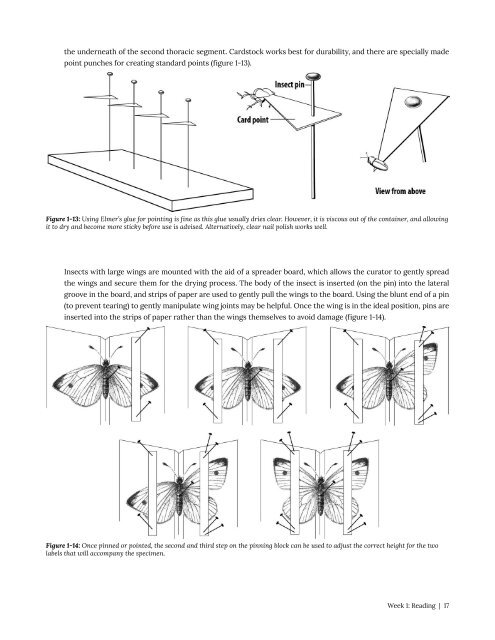Entomology 311 Lab Manual - 1st Edition, 2019
Entomology 311 Lab Manual - 1st Edition, 2019
Entomology 311 Lab Manual - 1st Edition, 2019
You also want an ePaper? Increase the reach of your titles
YUMPU automatically turns print PDFs into web optimized ePapers that Google loves.
the underneath of the second thoracic segment. Cardstock works best for durability, and there are specially made<br />
point punches for creating standard points (figure 1-13).<br />
Figure 1-13: Using Elmer’s glue for pointing is fine as this glue usually dries clear. However, it is viscous out of the container, and allowing<br />
it to dry and become more sticky before use is advised. Alternatively, clear nail polish works well.<br />
Insects with large wings are mounted with the aid of a spreader board, which allows the curator to gently spread<br />
the wings and secure them for the drying process. The body of the insect is inserted (on the pin) into the lateral<br />
groove in the board, and strips of paper are used to gently pull the wings to the board. Using the blunt end of a pin<br />
(to prevent tearing) to gently manipulate wing joints may be helpful. Once the wing is in the ideal position, pins are<br />
inserted into the strips of paper rather than the wings themselves to avoid damage (figure 1-14).<br />
Figure 1-14: Once pinned or pointed, the second and third step on the pinning block can be used to adjust the correct height for the two<br />
labels that will accompany the specimen.<br />
Week 1: Reading | 17


















